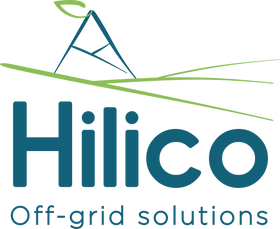FAQ
Find the most frequently asked questions below.
It depends on the amount of precipitation in your area. The rule of thumb is for every 1 mm of rain you will get approximately 1 liter of fresh water (7 gallons per inch or rainfall). For example in Seattle, WA, a single system can provide you with 945 liters per season. It's the equivalent of 630 bottles of water a year.
Two major factors you need to consider, first is where to place your Hilico RWH device. find a place with the most direct access to the rain.
The second factor is to keep your tarp tubes and container clean and in good condition.
Just treat the collector as your food plate. If you see leaves, or other organic matter near the filter, brush it and if necessary wash it with soap and warm water. Let it dry before storing. Do not use a washing machine or a dishwasher.
We recommend one of the 2 options
Give the water to your favorite plant, clean the tarp and disinfect your tube and water container. Disinfect the water by bringing it to a rolling boil and allowing it to cool.
Based on these results, it is considered that the process of heating water to a rolling boil, as recommended in the WHO Guidelines for Drinking-water Quality (WHO, 2011), is sufficient to inactivate pathogenic bacteria, viruses and protozoa
The short answer is yes, if the local regulation enables that.
A well maintained and cleaned Hilico RWH system can provide a renewable supply of soft, clear and odorless water that can be used for a range of purposes. In some circumstances it may represent the primary source of drinking water.
Our collection surface is made out of food-grade materials, it is easy to clean and can be constantly monitored for any contamination (unlike roofs), our foldable jerrican can be cleaned and sterilized easily (unlike a large water tank).
In addition, we provide you with the option to ensure your safety and your water quality with our specially designed pitcher filter that will add additional filtration for those organic and chemical compositions that might be picked up by the rain in the atmosphere, and stabilize PH and add some vital minerals to your body.
All of the above generate a pure and natural water source at your premise no matter where you are!
Collection of rainfall is an ancient practice that dates back over a thousand years. Precipitation is naturally distilled through evaporation prior to cloud formation, and thus is one of our purest sources of water.
Australia is a substantial case study of rainwater usage with over 2.3 million households relying on rain-water for drinking, and more than 6.3 million people use rainwater for some household use. Epidemiological health surveys by Jane Heyworth and Shelly Rodrigo confirmed that rainwater harvesting systems provide similar public health outcomes to mains water supplies.
Yes! A study on household drinking water attitudes found that many Australians were giving preference to drinking untreated rainwater when they had high-quality municipal water supplied, and the preference was based on rainwater taste rather than on water quality.
C. E. Chubaka, K. E. Ross, and J. W. Edwards, “Rainwater for drinking water: A study of household attitudes,” WIT Transactions on Ecology and the Environment, vol. 216, pp. 299–311, 2017.
Contrary to what most people think, Regulators are often permitting and even encouraging rain harvesting. The difference is manly with the end use of the water - potable or not. We suggest you check the laws in your area. A nice tool by the US department of energy can be helpful: https://www.energy.gov/eere/femp/rainwater-harvesting-regulations-map
This calculator of the Federal Energy Management Program estimates the amount of rainfall that can be collected at a given location by using historic precipitation data or user inputted precipitation data.
https://pnnl-gis.maps.arcgis.com/apps/dashboards/0a305382f87740ccb2296404d40d0cb0
Rainwater falls with an average pH of about 5.5 in North America. This is completely natural.
The pH values defined within drinking water guidelines are typically there to protect pipes from corrosion and are not stated as health guidelines. For example, Coffee is consumed at approximately pH 5.
